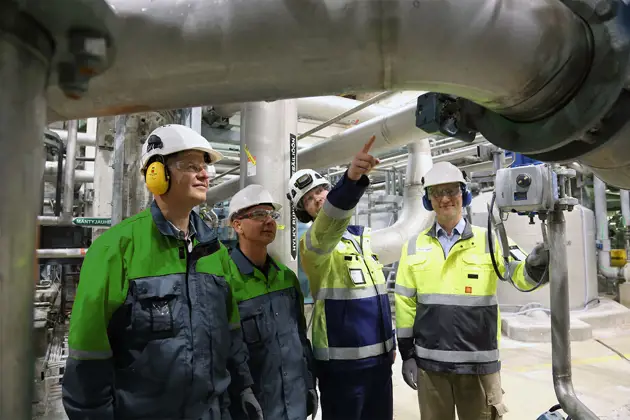The combination of reliable valves and intelligent valve controllers with online diagnostic capabilities enables the petroleum industry meet new regulations. It allows the production of environmentally clean fuels by using the process of isomerization in a cost-efficient way. The result is high process availability and successful production. The popularity of high-performance naphtha isomerization is increasing, because it effectively reduces the benzene concentration in the gasoline pool while maintaining or even increasing the gasoline pool octane number.

A typical isomerization process includes about 50 to 60 control valves and about 70 to 80 automated on-off and safety valves. This blog briefly describes the isomerization process and the valves involved at each stage.
1. Feed and regenerant control valves
Light naphtha feed and make-up hydrogen are both charged in separate dryer vessels. Reliable and accurate control is required to keep the hydrogen-to-hydrocarbon ratio at an optimal level.
Rising stem valves are typically used for isomerization feed control applications. When combined with a third generation, intelligent controller, plants can achieve the desired control accuracy and reliability. The best possible control accuracy is important to keep the feed ratio at the right level. A metal-seated valve with a rugged, one-piece body structure ensures long-lasting tightness and eliminates potential leak paths.
2. Dryer switching valves
The dryer switching applications are perhaps most critical for the valves in the isomerization process, because they direct the inlet and outlet gas streams into the adsorption bed columns, switching the columns from adsorption phase to regeneration or cooling phases.
Trunnion and seat-supported rotary ball valves are field-proven and licensor-approved solutions for isomerization process dryer switching applications. The use of a rotating stem with live-loaded emission-proof packing meets the certified emission levels without the need for packing lubrication.
Trunnion valves offer a simple bearing function to easily avoid excessive wear. Rotary ball valves resist particle build-up, as the seat and ball effectively wipe the seat surface with every cycle.
Rugged, pneumatic cylinder actuators provide an easy way to install the rotary valve in any mounting position without any additional support, providing savings with piping and installation costs. These valves can be equipped with intelligent controllers, such as Neles SwitchGuard, to set the on-off valve closing and opening stroke times and profiles according to process needs. Online condition monitoring further adds to process reliability with the diagnostic information saved within the device itself.
3. Hydrogen quench control
Hydrogen quenches control the reactor temperature and protect the catalyst beds from possible coke build-up. As feed composition may vary, valve rangeability is required.
Rising stem globe valves equipped with an intelligent valve controller ensure efficient and reliable reactor quenching. Keeping the variability under control reduces hydrogen consumption and guarantees that the required hydrogen amount is available. These valves provide a fast control response to stabilize the process conditions with modern, efficient catalysts.
4. Reactor inlet shut-off
An emergency shutdown (ESD) valve is needed to isolate and protect the reactors in case of a process upset. Rotary ball valves with an intelligent safety solenoid, such as Neles ValvGuard™, ensure that the valve is operational when needed and its robust design allows a long lifetime.
A high torque piston actuator, designed to overcome static friction, is an important feature for safety valves that are not operated frequently. Online partial stroke testing provides a way to ensure that the valve will be available when it is needed. The advanced diagnostics capability of the intelligent safety solenoid helps the plant further comply with demanding safety targets.
5. Column heat and product control
The reactor effluent is cooled before entering the product fractionation column. The hydrocarbon mixture is separated into the components according to the boiling points by fractionation in the column. All chosen valves must provide reliable and accurate control performance to ensure efficient gas-liquid separation and isomerate product purity.
Read more about the entire isomerization process and the role of intelligent valve controllers with online diagnostic capabilities here.
Written by Sari Aronen. For additional information on the topic, please contact ville.kahkonen@valmet.com
Text originally published in 2017, and slightly updated in April 2022, due to the company name change to Valmet.


